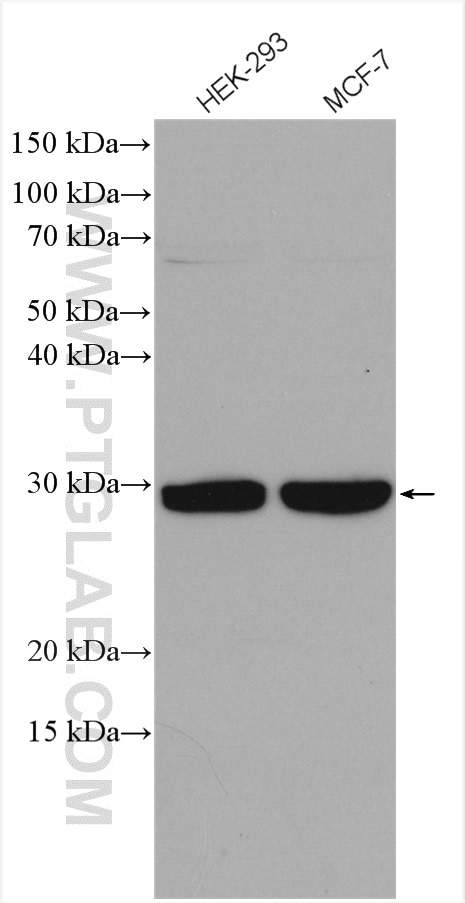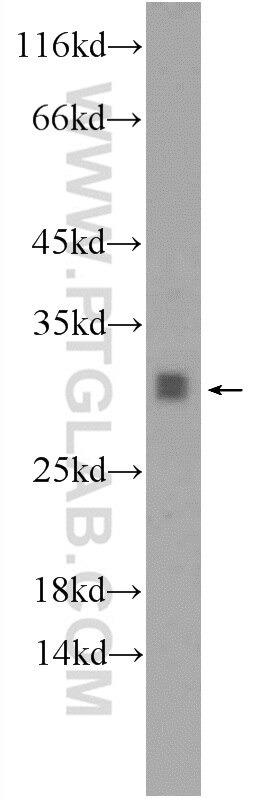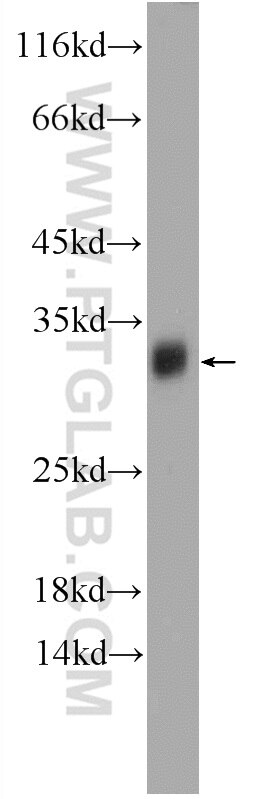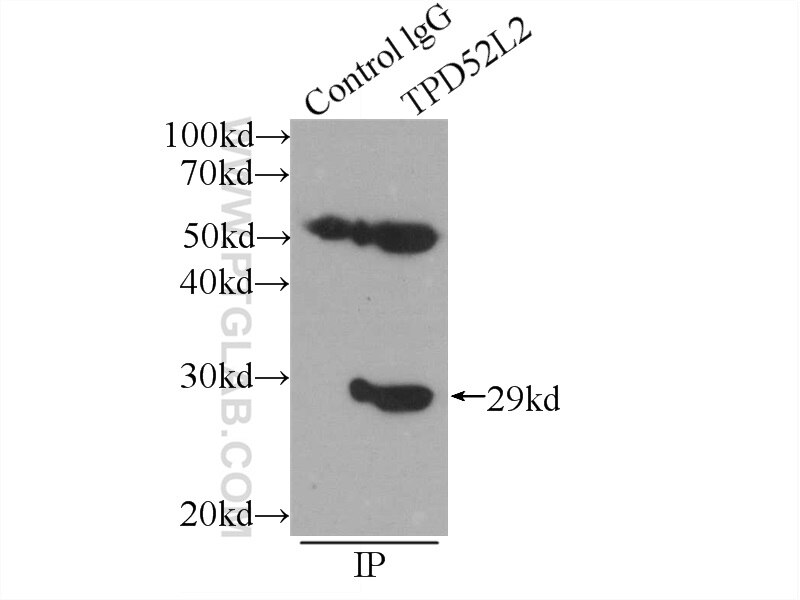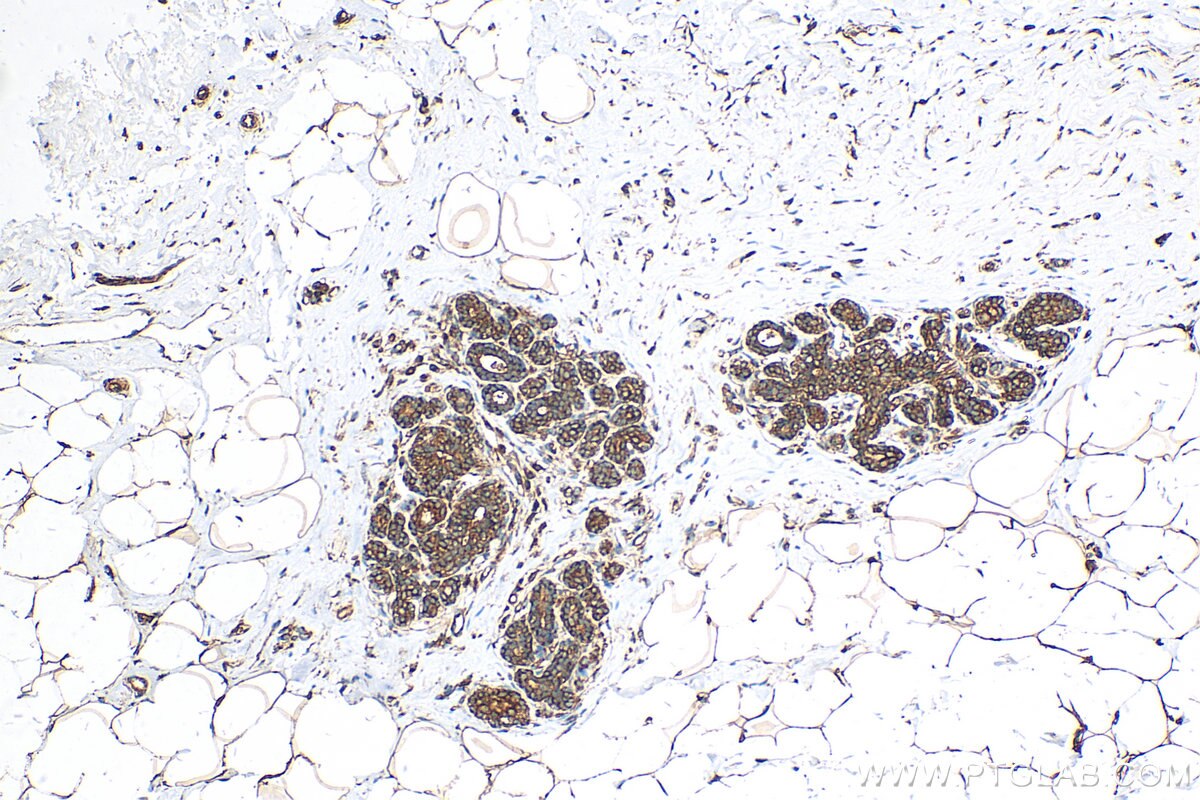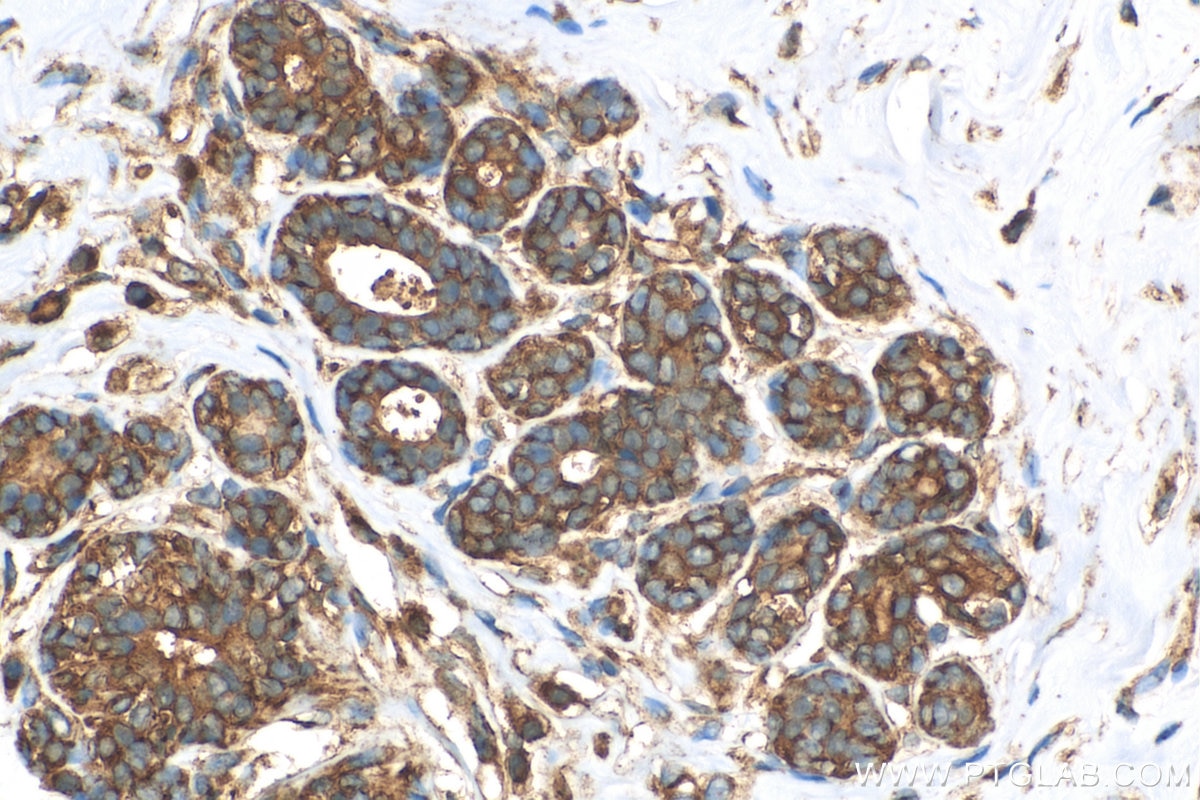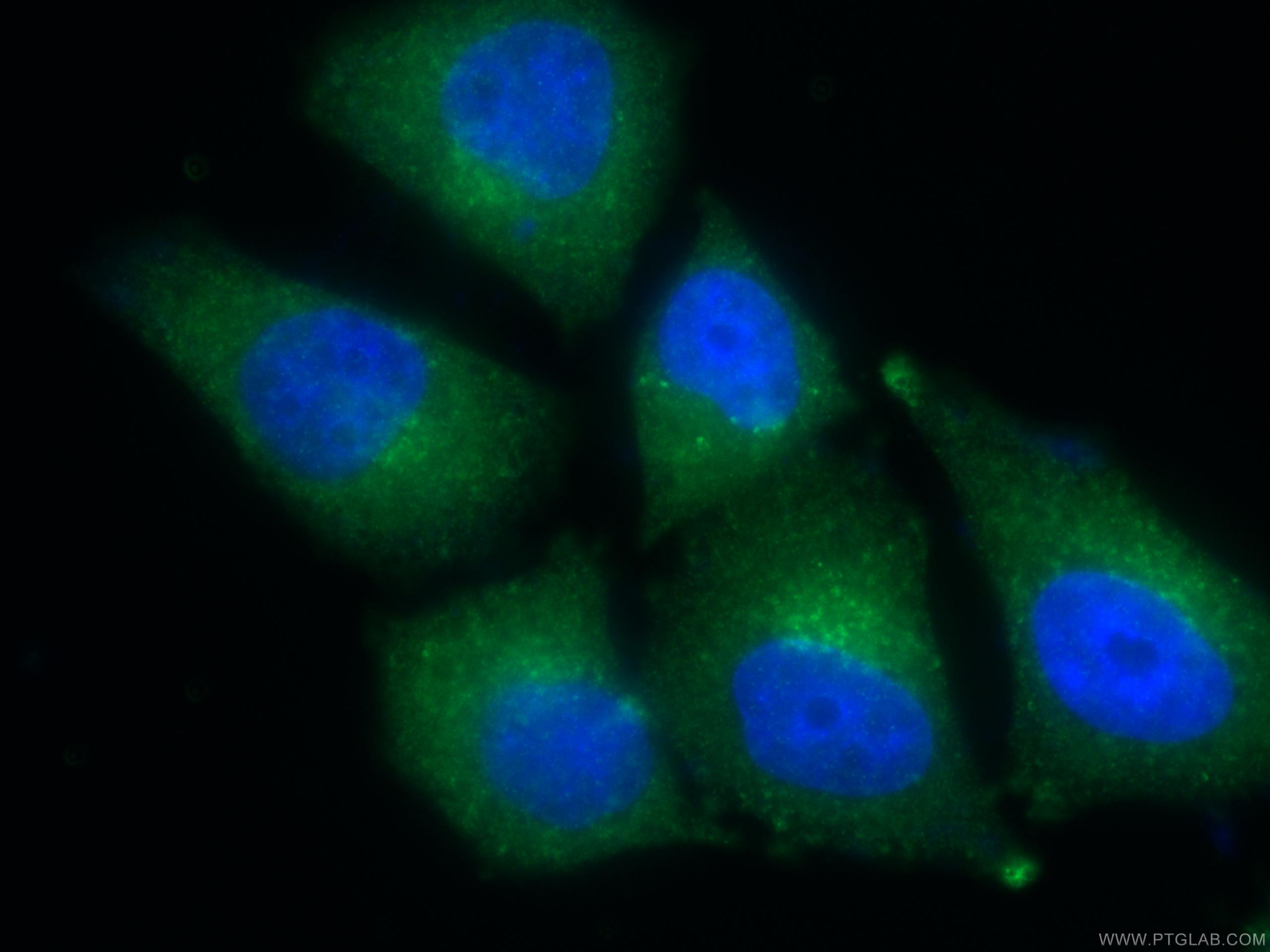- Phare
- Validé par KD/KO
Anticorps Polyclonal de lapin anti-TPD52L2
TPD52L2 Polyclonal Antibody for WB, IHC, IF/ICC, IP, ELISA
Hôte / Isotype
Lapin / IgG
Réactivité testée
Humain, rat, souris
Applications
WB, IHC, IF/ICC, IP, ELISA
Conjugaison
Non conjugué
N° de cat : 11795-1-AP
Synonymes
Galerie de données de validation
Applications testées
| Résultats positifs en WB | cellules HEK-293, cellules MCF-7, tissu cérébral de rat, tissu cérébral de souris |
| Résultats positifs en IP | cellules HEK-293 |
| Résultats positifs en IHC | tissu de cancer du sein humain, il est suggéré de démasquer l'antigène avec un tampon de TE buffer pH 9.0; (*) À défaut, 'le démasquage de l'antigène peut être 'effectué avec un tampon citrate pH 6,0. |
| Résultats positifs en IF/ICC | cellules HepG2, |
Dilution recommandée
| Application | Dilution |
|---|---|
| Western Blot (WB) | WB : 1:500-1:1000 |
| Immunoprécipitation (IP) | IP : 0.5-4.0 ug for 1.0-3.0 mg of total protein lysate |
| Immunohistochimie (IHC) | IHC : 1:50-1:500 |
| Immunofluorescence (IF)/ICC | IF/ICC : 1:50-1:500 |
| It is recommended that this reagent should be titrated in each testing system to obtain optimal results. | |
| Sample-dependent, check data in validation data gallery | |
Applications publiées
| KD/KO | See 3 publications below |
| WB | See 8 publications below |
| IHC | See 2 publications below |
| IF | See 1 publications below |
| IP | See 1 publications below |
Informations sur le produit
11795-1-AP cible TPD52L2 dans les applications de WB, IHC, IF/ICC, IP, ELISA et montre une réactivité avec des échantillons Humain, rat, souris
| Réactivité | Humain, rat, souris |
| Réactivité citée | Humain, souris |
| Hôte / Isotype | Lapin / IgG |
| Clonalité | Polyclonal |
| Type | Anticorps |
| Immunogène | TPD52L2 Protéine recombinante Ag2364 |
| Nom complet | tumor protein D52-like 2 |
| Masse moléculaire calculée | 206 aa, 22 kDa |
| Poids moléculaire observé | 25-30 kDa |
| Numéro d’acquisition GenBank | BC006804 |
| Symbole du gène | TPD52L2 |
| Identification du gène (NCBI) | 7165 |
| Conjugaison | Non conjugué |
| Forme | Liquide |
| Méthode de purification | Purification par affinité contre l'antigène |
| Tampon de stockage | PBS with 0.02% sodium azide and 50% glycerol |
| Conditions de stockage | Stocker à -20°C. Stable pendant un an après l'expédition. L'aliquotage n'est pas nécessaire pour le stockage à -20oC Les 20ul contiennent 0,1% de BSA. |
Informations générales
Tumor protein D52-like proteins (TPD52) are small coiled-coil motif bearing proteins that were first identified in breast carcinoma. Three human TPD52 members had been identified, named hD52 (TPD52), hD53 (TPD52L1), and hD54 (TPD52L2). The most important characteristic of the protein family is a highly conserved coiled-coil motif that is required for homo- and heteromeric interaction with other TPD52-like proteins. TPD52 and related proteins have been implicated in cell proliferation, apoptosis, and vesicle trafficking. TPD52L2 has five isoforms produced by alternative splicing, and its multiple sites have been identified to be phosphorylated. Interaction of TPD52L2 with MAL2, a novel member of the MAL proteolipid family, may be required for the role of TPD52L2 in vesicle transport.
Protocole
| Product Specific Protocols | |
|---|---|
| WB protocol for TPD52L2 antibody 11795-1-AP | Download protocol |
| IHC protocol for TPD52L2 antibody 11795-1-AP | Download protocol |
| IF protocol for TPD52L2 antibody 11795-1-AP | Download protocol |
| IP protocol for TPD52L2 antibody 11795-1-AP | Download protocol |
| Standard Protocols | |
|---|---|
| Click here to view our Standard Protocols |
Publications
| Species | Application | Title |
|---|---|---|
Carcinogenesis TPD52L2 impacts proliferation, invasiveness and apoptosis of glioblastoma cells via modulation of wnt/β-catenin/snail signaling.
| ||
Cell Biosci Tumor protein D52 is upregulated in oral squamous carcinoma cells under hypoxia in a hypoxia-inducible-factor-independent manner and is involved in cell death resistance. | ||
J Biol Chem Tumor protein D54 binds intracellular nanovesicles via an extended amphipathic region. | ||
Int J Oncol Opposite effects of tumor protein D (TPD) 52 and TPD54 on oral squamous cell carcinoma cells. | ||
Biomed Res Int Tumor Proteins D52 and D54 Have Opposite Effects on the Terminal Differentiation of Chondrocytes. | ||
Neoplasma Silencing of TPD52 inhibits proliferation, migration, invasion but induces apoptosis of pancreatic cancer cells by deactivating Akt pathway.
|
Avis
The reviews below have been submitted by verified Proteintech customers who received an incentive for providing their feedback.
FH Jerome (Verified Customer) (01-05-2020) | Puncta in the cytoplasm
 |
